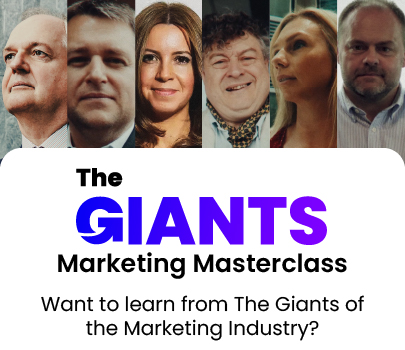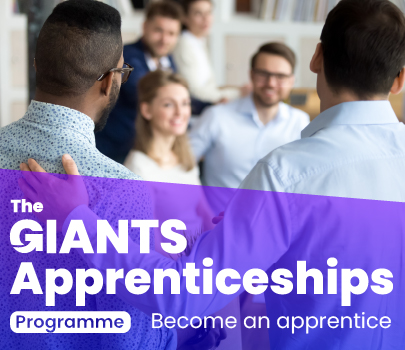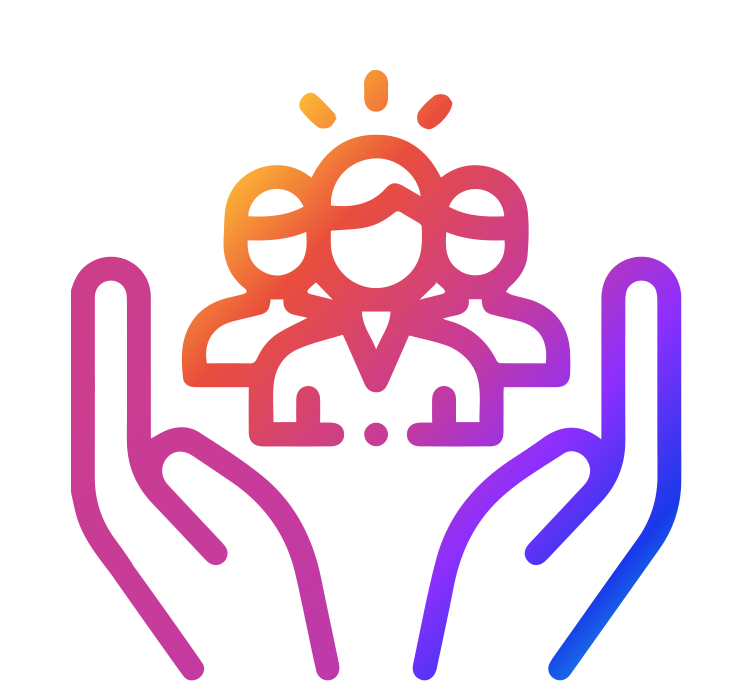The Marketing Pyramid is a simple and straightforward way for you to plan all your marketing activities. It is also a very useful visualisation to ensure you have covered all the areas when marketing planning.
The Marketing Pyramid Framework
Let’s go through each of the stages in the framework
Marketing Pyramid and Planning Stage 1: Insight and data
Marketers are the voice of the customer in the organisation, and so need to understand their customers’ evolving needs and wants. To do this they leverage information, specifically market research that is gathered through various tools and techniques. Importantly, this does not extend to just customers, but also the wider marketing landscape, including competitors, as well as information about the macro-environment. Marketers must combine an in-depth understanding of the changing macro-environment, stakeholders, customers, and competitors.
American ice cream brand Häagen-Dazs offers a good example of how marketers can use insight into one’s customers in a broader context, as a way to address changing needs and wants. The premium brand understood that in order to win the hearts, minds, and tastebuds(!) of their customers they needed to be there at important moments in their lives. Arjoon Bose, Head of Brand Experiences at General Mills, refers to this concept as ‘consumable occasions’.
Häagen-Dazs knew that they needed to scale up their distribution to people’s homes, but in a way that was creative and engaging. To achieve this, they partnered with London-based entertainment company Secret Cinema to bring a concept to customers called Secret Sofa.
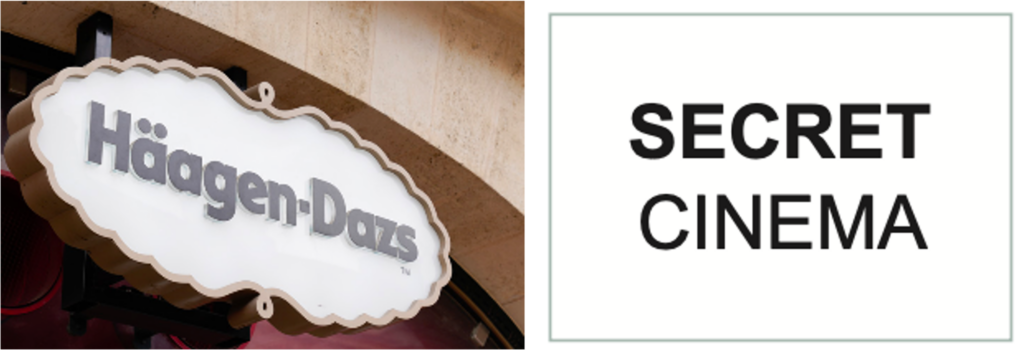
Customers could order the flavour of the week to their doorsteps as part of the offering deemed the ‘best virtual film club in the world’. Not only did the brand look to improve distribution through new partnerships, but also for ways to augment their product strategy, which they did by teaming with alcoholic beverage brandsL Sipsmith and Jack Daniels to offer unique thematic pairings with the weekly Friday-night screenings of Secret Sofa.
The company needed to evolve their strategy, so they widened their perspective, and looked at what was happening in both the macro-environment and in their customers’ lives. As most people were working from home, they were looking for ways to unwind, to celebrate special occasions with friends and family, as well as to be part of communal experiences.
Customers could watch a selection of films at home, dress up for the occasion and share it on social media. It was also a great way for Häagen-Dazs to own a new ‘occasion’ in the lives of their customers, which is likely to stick for many years to come.
We will look at a variety of digital tools and techniques to achieve this level of insight in a subsequent chapter.
Marketing Pyramid and Planning Stage 2 and 3: Brand and Comms
Developing a brand lies at the heart of every marketer’s role, and is the hallmark of every business. A brand is what initially attracts consumers to take interest in your organisation or company, based on the values it projects. A good example of this comes from Unilever, who announced that their ‘Brands with Purpose’ grew 69% faster than the rest of their brands, prompting CEO Alan Jope to suggest that this was the direction the company was moving in. They are not alone, as the Kantar Purpose Report 2020 showed that “brands recognised for high commitment to purpose have grown at more than twice the rate of others”.

A great example of a brand with purpose and soul is clothing company Patagonia, whose recent press advert made waves for all the right reasons. (see below)
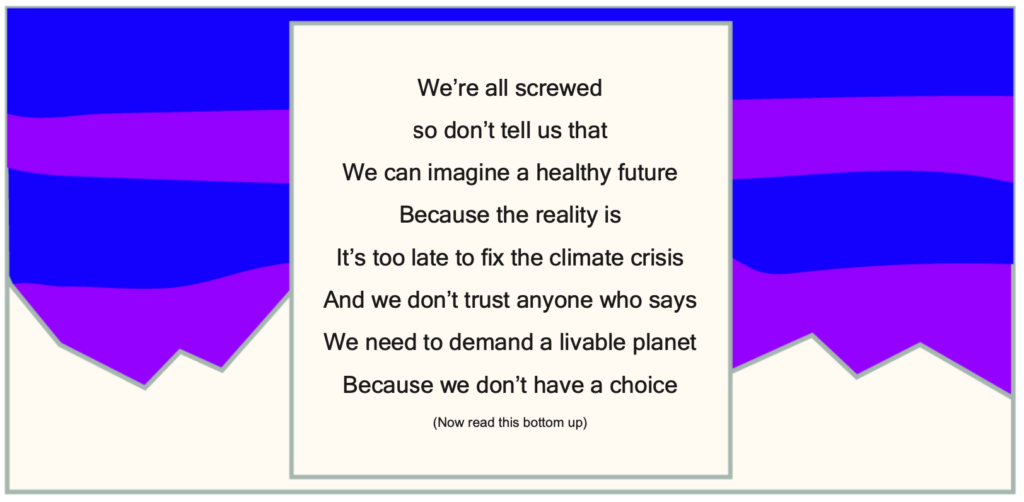
Businesses have realised that the level of control and levers that they have to craft their brand has completely changed. The first step is to accept this change and let the brand evolve, accordingly.
The following diagram is a good tool to assess how a brand has evolved:
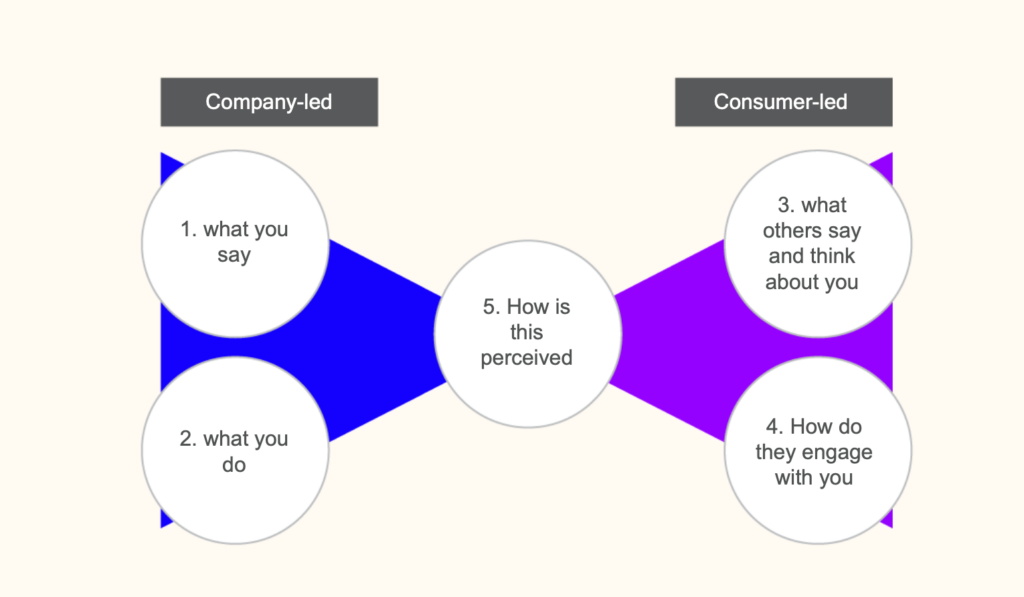
The brand, the association that customers make with a brand, and how it is ultimately perceived, begins with the company. The first two elements of this illustration: ‘What you say’ and ‘What you do’ are in your control. A good way to set the tone and foundations for your brand is to get these right in the first place.
What you say
The first is ‘What you say’, which encompasses the tone, look, and feel of the brand, and how you communicate these to your customers. In today’s context, a careful balance of friendliness, approachability, and professionalism are essential for building a long-term relationship based on trust.
You must also set up strong channels of communication between you and your consumers. This encompasses not just ways in which the consumer can get in touch with you, but also how they engage with your brand. You can do this by setting up all your social media feeds, getting your online and offline communication channels set up, and building a community or following. To learn more about how you can achieve this, check out our course on Developing and Executing a Social Media Content Marketing Campaign.
What you do
‘What you do’ has implications that are threefold and incorporate the following:
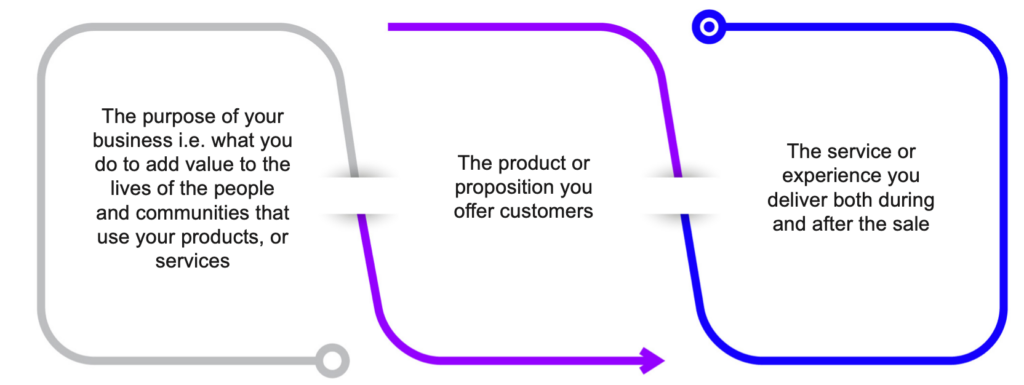
· The purpose of your business i.e. what you do to add value to the lives of the people and communities that use your products, or services
· The product or proposition you offer customers
· The service or experience you deliver both during and after the sale
Get these elements right and you are well on your way to delivering a positive brand experience that should resonate with your target audience.
Then you need to move over to the consumer side and determine how they feel about your brand.
What others say and feel about you
You need to be able to assess what consumers say about your brand, how it’s coming across to them, and whether they have positive or negative feelings towards it. To effectively assess this, you need a range of tools.
In today’s world, where social media is probably one of the biggest and fastest ways for opinions on your brand to spread, “social listening” becomes an integral tool to understand customer perspectives. Social listening is the mechanism of monitoring digital conversations to understand a customer’s perspective, and what they are saying about a brand, via the internet. Studying and analysing customer-support forums, product review blogs, and also the types of comments, shares, and likes you receive on social media all fall under social listening.
How do they engage with you?
The next stage is to determine how consumers engage with your brand. Consider the type of channels they use, what are they asking for, how satisfied are they when they come in contact with your brand? This includes reaching out for support or help when using your product or service.
The final element is the combination of all four factors, which is how your brand is perceived by consumers. The overall perception is a significant factor in whether they will continue to engage with your brand, buy more from you, and tell others to do the same.
Marketing Pyramid and Planning Stage 3: Proposition
The next element that a marketer needs to look at is developing a compelling proposition that meets a customer’s needs. It’s how an organisation delivers tangible value to their customers day in and day out. Digital tools and techniques have enabled this process to become more personalised, iterated, and rapidly deployed.
What makes a good proposition?
A compelling proposition should be able to set a business or a brand apart from its competitors. So, what do good propositions do differently?
• First of all, they are externally focused. Great propositions focus on value to be generated for either current or prospective customer segments that are not easily replicated by competitors. As markets mature and technologies change, it is possible for areas of high value to quickly be seen as hygiene factors. So, reviewing propositions and ensuring these remain relevant are critical for strong resonance with customer segments.
• They consider the total customer journey. A customer’s experience is more than the product or service. It includes, but is not limited to customer service, and after-sale care. Successful marketers understand which of these experiences during the customer journey are valuable in driving consideration, purchase, and loyalty.
Let’s take the case of Apple.

Their value proposition is around offering simple, beautiful products that feel magical and intuitive to use. These values not only permeate their products, but also their retail stores and Genius Bar customer-service offering.
• They understand the wants and needs of their customer segment. Individual motivations vary wildly, so successful marketers start by identifying under-served segments, and understanding their needs and wants. Propositions, when crafted well, clarify what a brand or business will not compromise on, in the quest for profit to meet these needs.

For example, Uber’s proposition is singularly focused on delivering consistency in convenience and trust (which is one of the reasons their external tagline is ‘always the ride you want’). This is underpinned by offering the option of booking a ride with one click, a driver that knows where to go, and not having to worry about having cash on hand.
- A proposition should be able to form a strong emotional and rational connection with customers for them to want to use and share the proposition with others.
Take, for example, a pair of Apple AirPods. Its ergonomic design, surround-sound quality, and pioneering noise-cancelling technology deliver a superior listening experience to the customer. However, in addition to this, and perhaps the main reason people choose this product over other wireless headphones (and that too at a premium) is the way it makes them feel. The emotion of being part of the ‘Apple experience’ from the moment they research the product, to the in-store service, and the sense of prestige they feel when using the product, all form an important part of the value proposition.
Marketing Pyramid and Planning Stage 4: Customer Experience
The final component of the marketing pyramid is the ability to create an experience for the customer. At the heart of any proposition lies customer experience (CX) that enables customers to seamlessly navigate the offering. Most of these experiences are actually functional in nature, used as a way to get customers to the check-out counter with as many things as possible in their basket. Creating a simple-to-use navigational experience is important, as it forms the baseline for customer expectation.
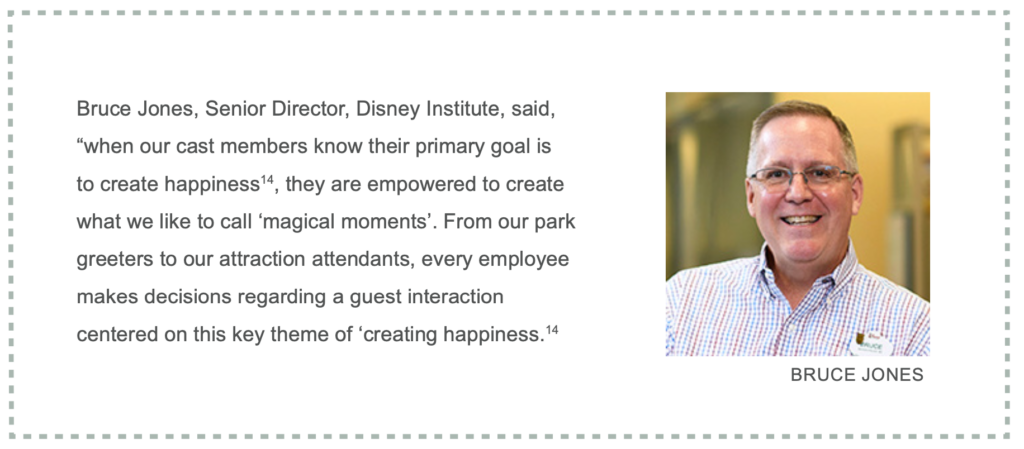
This is especially important as we are increasingly seeing a trend where “companies compete as much on customer experience as they do on product and price”. Take one of the most iconic companies in the world, entertainment and media company Disney, who have a 70% return rate of first-time visitors to their parks, thanks to their world-class, CX approach, centred around “creating happiness” at each touch point. Bruce Jones, Senior Director, Disney Institute, said, “when our cast members know their primary goal is to create happiness, they are empowered to create what we like to call ‘magical moments’. From our park greeters to our attraction attendants, every employee makes decisions regarding a guest interaction centered on this key theme of ‘creating happiness.’”
The experience triangle
There are three key dimensions to consider in ‘the experience triangle’:
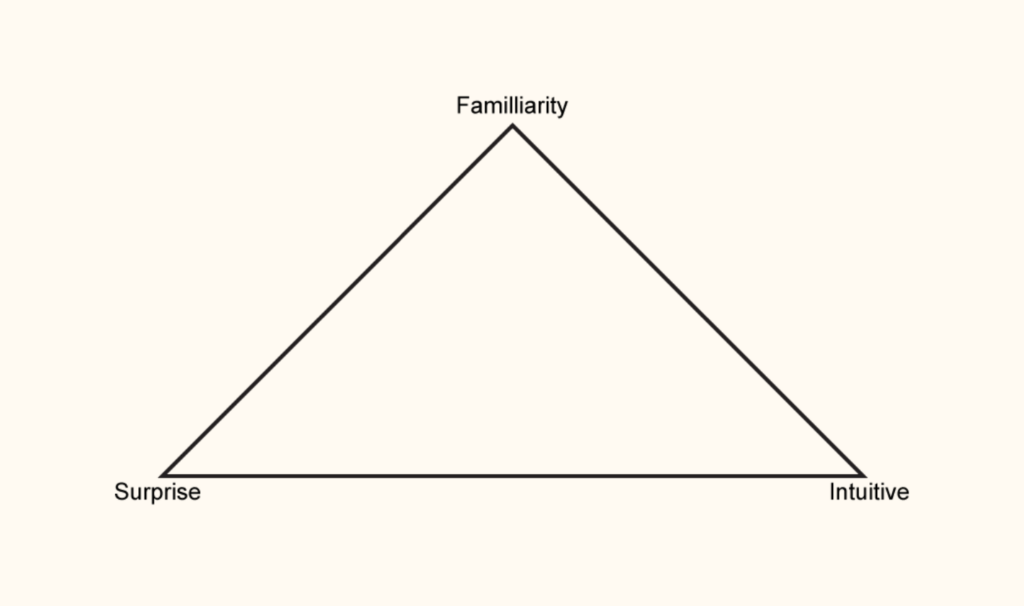
Familiarity
When designing the CX, it’s important to bear in mind that it needs to create a sense of familiarity, so that the customer can grow accustomed to the journey. It must reflect your brand values, tone, style, and design at each touch point, so that with each step the customer experiences a comfort factor, as they learn what to expect. This consistency builds memory chains in the mind of customers and, over a period of time, they develop trust through familiarity with the journey they go on. It’s like their favourite song that gets better, each time they listen to it.
Disney, for instance, uses this concept to a tee in their parks, as every aspect of their CX from rides to restaurants is based on existing characters and familiar concepts that people have seen on TV, time and time again, and across their stores. They go the extra mile in their theme parks where visitors can meet and interact with iconic characters, as well as immerse themselves in the experience of being on recreated sets of their favourite shows, providing that once-in-a-lifetime experience.
Surprise
Embedded in this familiarity, you also need to create real moments of surprise that make the customer feel special and valued. These need not be big things, only simple ways to actively demonstrate that you care for them. Surprising moments can also come in the form of empathy, where you either recognise a customer’s circumstances, or appreciate where you might not have delivered their expectations. In these ‘moments of truth’ you can create lasting impressions and loyalty by going above and beyond, especially when the customer has no expectation of your doing so.
This is where Disney excels with children and adults alike. They add flourishes to the journey, such as having beloved Disney characters hand out free goodies to enjoy on their way out. Integral to this is that they instil an ‘experience mentality’ rather than a ‘task mentality’ in their staff, as they see being able to provide great experiences as an asset rather than an expense. This highlights the importance of adopting the right mindset, which we dealt with in the previous chapter at every stage.
Intuitive
The end-to-end journey needs to both anticipate how a customer might ideally want to navigate it, and remove all barriers and friction points to ensure that they do so. Making the CX seamless and simple, demonstrates to customers that you value their time and effort, and increases the likelihood of them completing their journey with you.
One of the ways in which Disney achieves this is through their app that helps visitors easily navigate their park. As the app is GPS-enabled, it delivers a high degree of personalisation with their helper guiding users and providing them with helpful information, including showtimes, wait times for rides, and the option of pre-ordering food. This makes visitors feel comfortable in their surroundings that puts them at ease and removes ambiguity from their experience.


